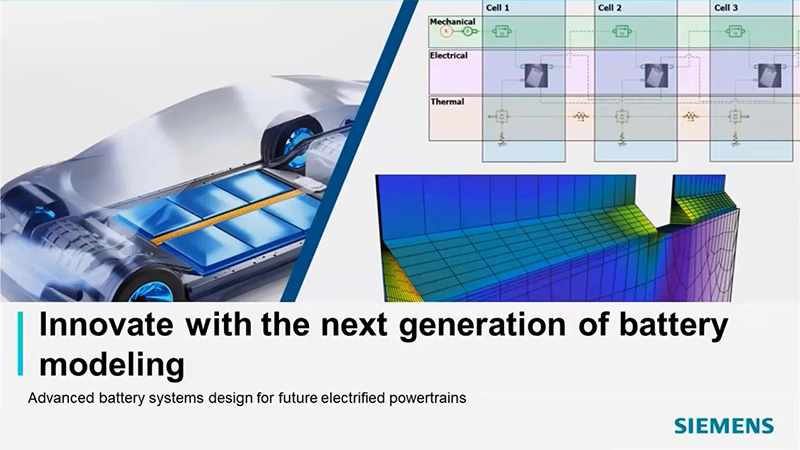차세대 배터리 모델링을 통한 혁신
[ 온디맨드 웨비나 | 32:03 ]

The lithium-ion battery is currently the preferred energy storage technology for battery electrified vehicles (BEV) due to its long cycle life, high energy density, and high-power density capabilities. However, many other technologies are worth considering for a more suitable battery in terms of safety and lifetime range.
In this on-demand webinar, you will learn about the current status of battery modeling innovation. Our speakers Martin Petit, Electrochemical Engineer at IFP Energies Nouvelles and Project Manager of MODALIS² European project, and Xavier Conqui, Business Development Manager for Automotive at Siemens Digital Industry Software, will also discuss the value of matching industrial players' expectations. Register to watch now!
Virtually design new generation batteries from cells to the battery pack
Most materials cell suppliers and electrified vehicles manufacturers are investigating new options outside the lithium-ion battery by using digital models that allow them to predict the performance of these new generation batteries. Accessing the right tool to virtually design each new generation from cells to the battery pack and anticipating battery performance is crucial to optimize their development cycle. With the Siemens Simcenter multi-scale and multi-physics battery modeling solution, engineers and designers can accelerate the design and engineering of BEV batteries by virtually exploring battery design variants and assessing multi-level battery performance.
Predict battery performance and validate early pack performance
To stay ahead in the innovation race, engineers need to be able to quickly predict the outcome of battery design changes on the real-world next-generation battery performance. MODALIS², a European research project, seeks to provide a range of models that allow users to address the many available technologies, developing and validating battery modeling for Gen 3b cells and Gen 4 cells. Once completed, these innovative models will be integrated into Simcenter battery solutions. Together with a robust set of features and methods, engineers will be able to analyze complex battery systems’ flow, heat transfers, and electrochemistry at every scale to deliver the best possible behavior prediction of next-generation batteries.
Accurately model battery cell behavior with low computational cost
Developing competitive BEVs for mass markets is strong on the agenda of automotive OEMs. Accurate battery modeling used in a system and 3D multi-physics simulation environments can better support cell suppliers and OEMs matching their requirements in designing electrified powertrains. Simcenter battery solutions allow the implementation of atomistic scale results in continuum modeling. Cycling simulation at the cell level addresses 3D behavior and cell swelling, while long-term cycle accounts for the mechanical effect on aging. These fast-computing physics-based models allow for accurate battery modeling of cell behavior with low computational costs.
Learn more about advanced battery systems design solutions for future electrified powertrains in our on-demand webinar — Register to watch now!